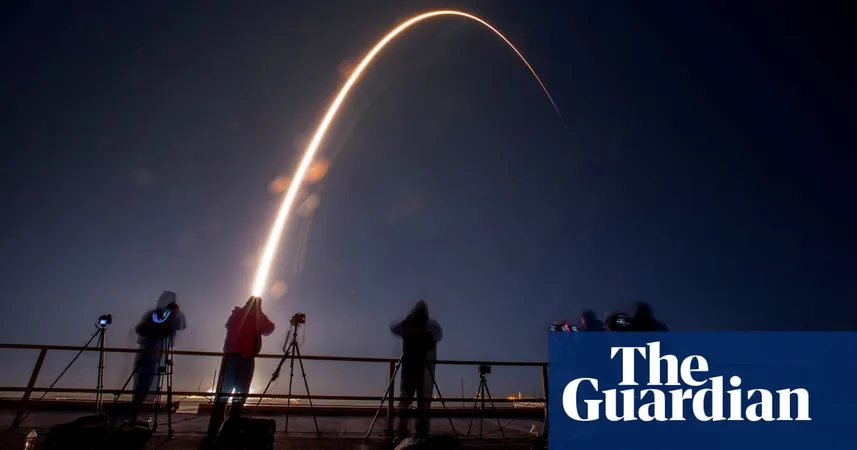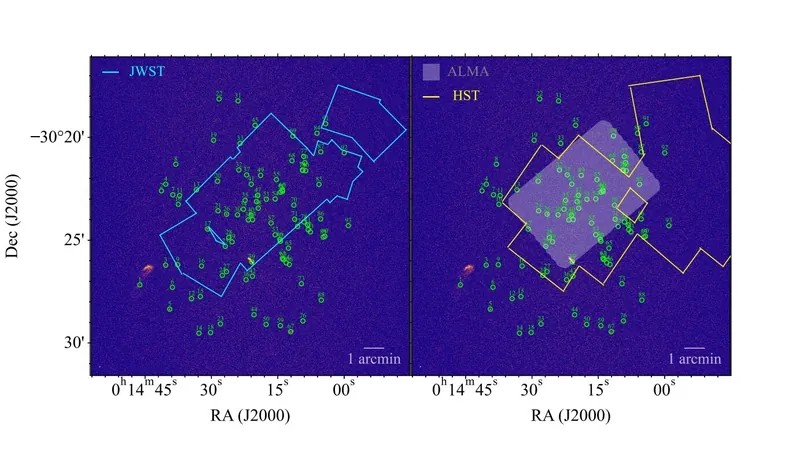
Revolutionary SpaceX Launch: Two Lunar Landers Set for Historic Moon Missions!
2025-01-15
Author: William
Introduction
In a groundbreaking event for private space exploration, two innovative lunar landers are now en route to the Moon, following a spectacular launch early Wednesday. The mission marked a significant collaboration between start-ups from Texas and Japan, who shared the costs for an early morning launch aboard a SpaceX Falcon rocket from Florida's Kennedy Space Center.
The Launch
At precisely 1:11 AM ET, the Falcon rocket blasted off, carrying a rover from Tokyo-based ispace and a lander from Cedar Park’s Firefly Aerospace. This mission, dubbed Blue Ghost Mission 1, is set to conduct a range of experiments for NASA upon its scheduled landing in early March.
Mission Details
After a successful separation one hour into the flight, the two spacecraft began their independent journeys toward lunar orbit. The US lander is expected to hit the lunar surface first, followed by the ispace lander, which will arrive in late May or early June.
Significance of the Mission
For ispace, this mission is particularly significant. The company aims to redeem itself after its previous attempt in April 2023 ended in failure when its lander accelerated unexpectedly and crashed during its bid to make the first private moon landing. This time, the rover—named Resilience—will analyze lunar soil and seek potential water and food sources for future human missions. It will conduct short missions from its lander, targeting the Mare Frigoris region in the Moon’s far north.
Communication Success
In an encouraging update, ispace confirmed via Twitter that a communication link with the Resilience lunar lander has been successfully established, and that the spacecraft is generating electrical power stably in orbit.
Objectives and Funding
The objectives for Firefly’s US-built lander mirror those of ispace, paving the way for more regular manned missions to the Moon, particularly following NASA's Artemis III mission, which intends to carry astronauts to the lunar surface for the first time since Apollo 17 in 1972.
NASA has invested $145 million into Firefly’s mission, which includes ten scientific experiments. These experiments range from collecting lunar dust to testing cutting-edge technology designed to help astronauts manage the Moon's abrasive surface materials. Additionally, Blue Ghost’s team will evaluate navigation systems and essential methods to shield computer equipment from space radiation during the mission.
Operational Timeline
Both lunar landers are expected to operate for about two weeks after their landings, covering the daylight phase of a lunar day, before entering into darkness and powering down.
Future Plans
As a spectacular finale to their mission, Firefly’s CEO Jason Kim expressed their plan to capture high-definition imagery of a total eclipse from the Moon. This extraordinary event, where Earth obscures the Sun, will also offer vital data on how lunar regolith reacts under dusk conditions. Kim referenced the iconic moment witnessed by Apollo 17 astronaut Eugene Cernan, who observed a luminescent glow as lunar dust stirred on the Moon's surface.
Public-Private Partnerships
This mission forms part of NASA’s public-private partnership under the Artemis program, aimed at incorporating commercial players into lunar exploration—an arena previously dominated by government operations.
Looking Ahead
Looking ahead, in just a month's time, Texas-based Intuitive Machines is expected to perform its second lunar mission, building upon its historic achievement as the first private company to successfully land on the Moon with its Odysseus spacecraft last February. The upcoming IM2 mission will deploy a lander that includes advanced equipment for searching for water, along with an innovative Micro-Nova hopper designed to perform experiments in shaded areas.
Conclusion
Since the dawn of lunar exploration in the 1960s, only five nations – the United States, China, India, Japan, and the former Soviet Union – have successfully landed spacecraft on the Moon. The new era of private space exploration promises to expand this legacy, with the potential for further discoveries and enhanced understanding of our nearest celestial neighbor. Stay tuned as we continue to follow these exciting developments!









 Brasil (PT)
Brasil (PT)
 Canada (EN)
Canada (EN)
 Chile (ES)
Chile (ES)
 Česko (CS)
Česko (CS)
 대한민국 (KO)
대한민국 (KO)
 España (ES)
España (ES)
 France (FR)
France (FR)
 Hong Kong (EN)
Hong Kong (EN)
 Italia (IT)
Italia (IT)
 日本 (JA)
日本 (JA)
 Magyarország (HU)
Magyarország (HU)
 Norge (NO)
Norge (NO)
 Polska (PL)
Polska (PL)
 Schweiz (DE)
Schweiz (DE)
 Singapore (EN)
Singapore (EN)
 Sverige (SV)
Sverige (SV)
 Suomi (FI)
Suomi (FI)
 Türkiye (TR)
Türkiye (TR)
 الإمارات العربية المتحدة (AR)
الإمارات العربية المتحدة (AR)